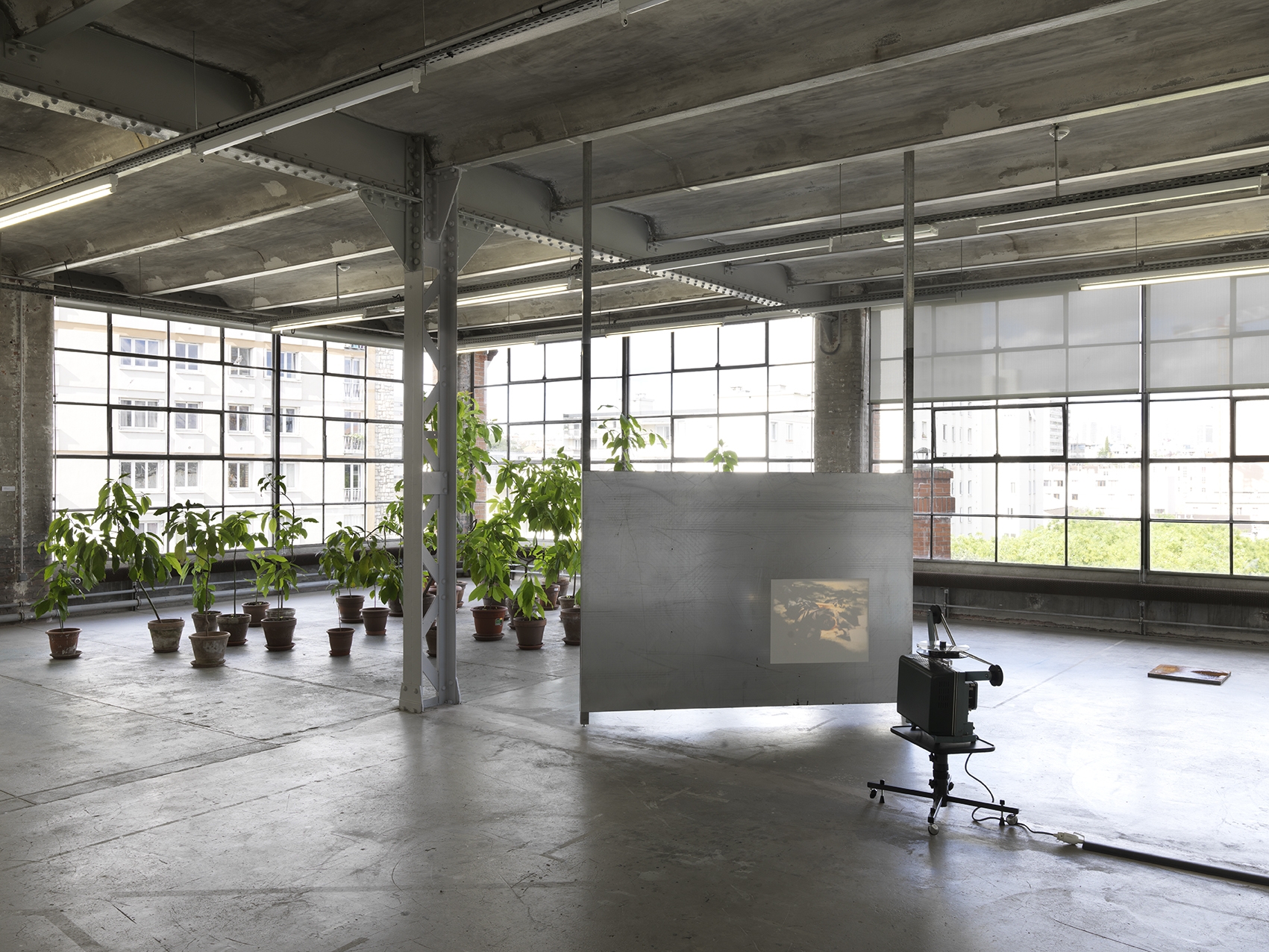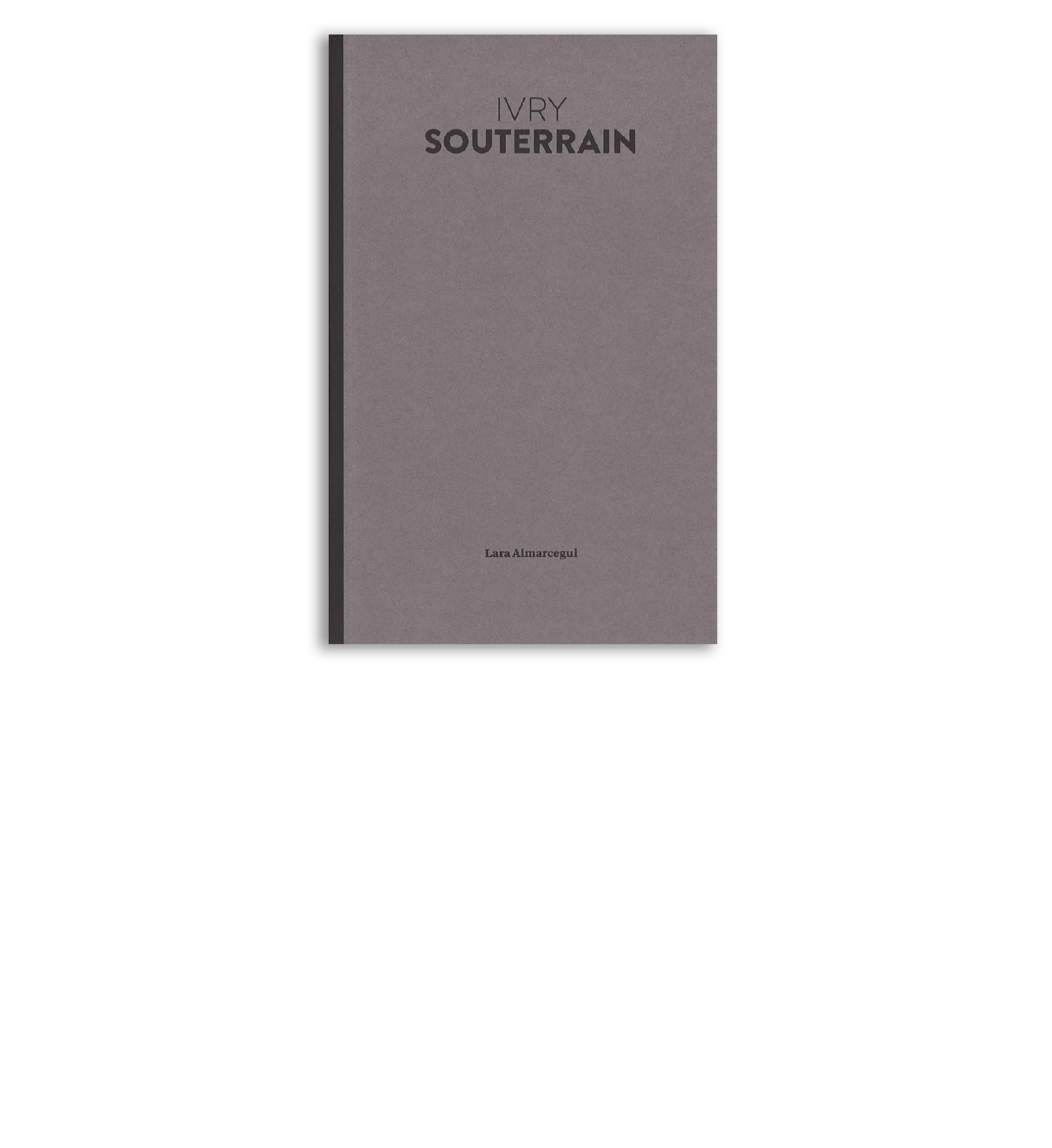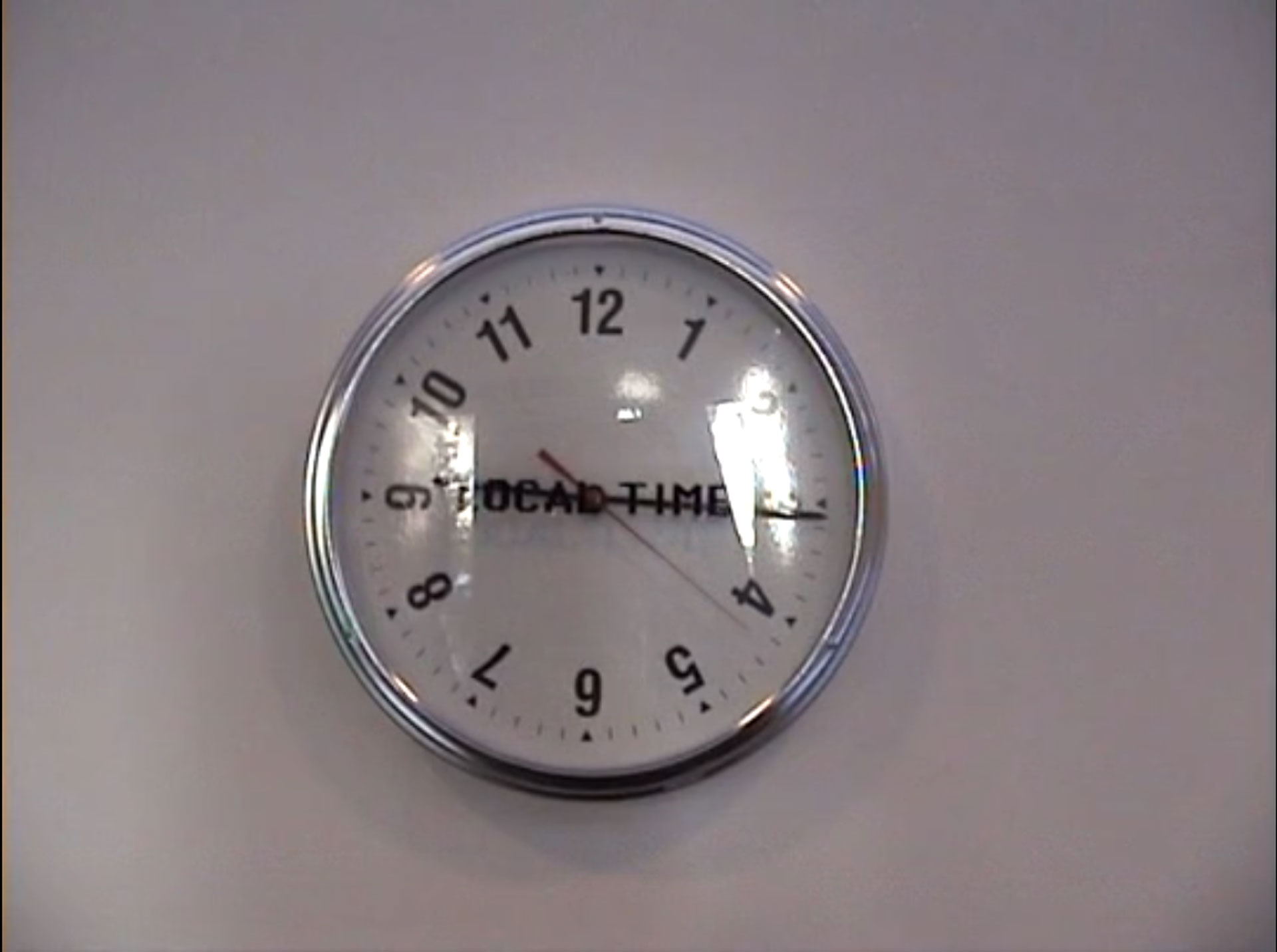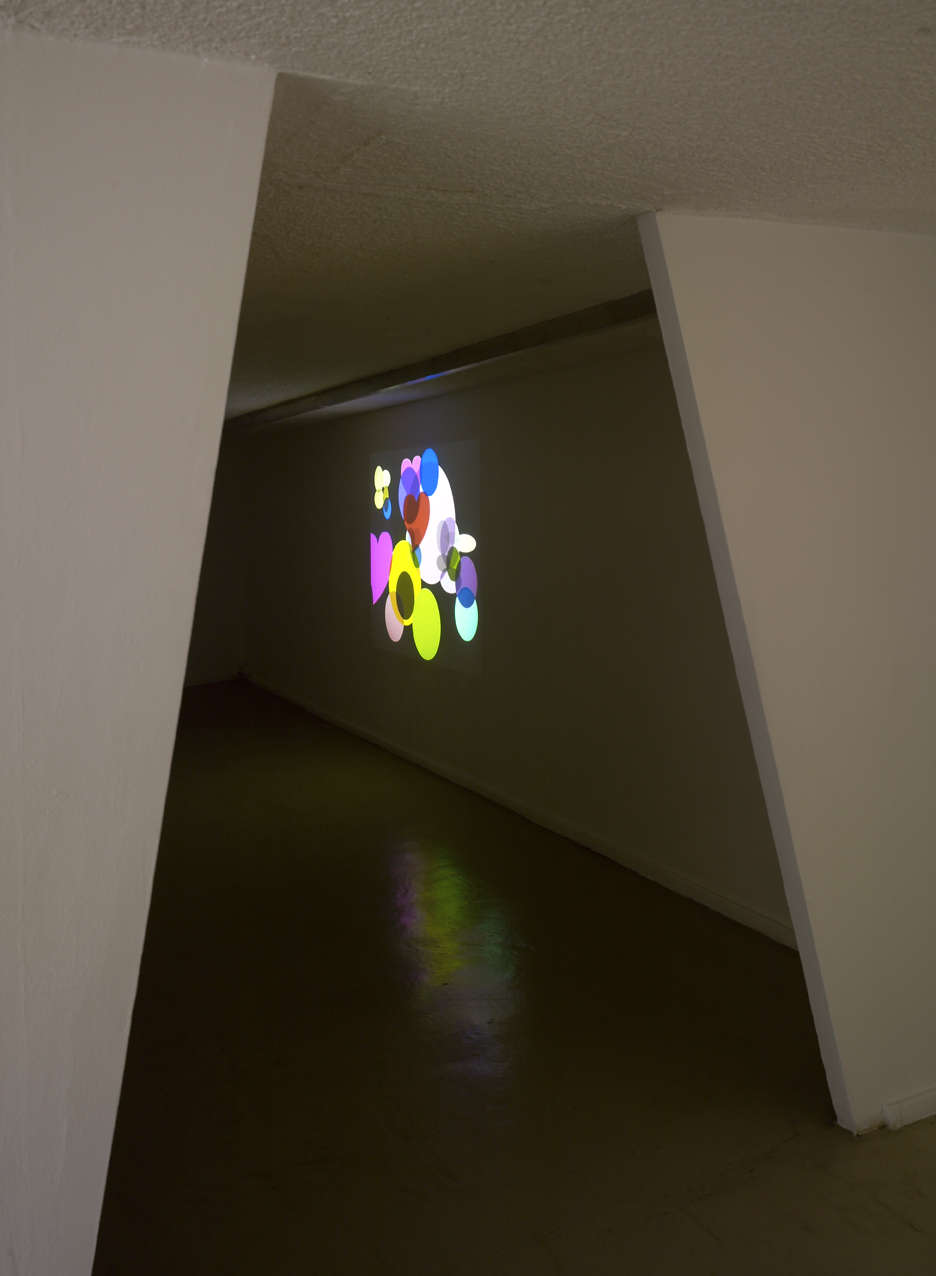Ivry souterrain
Lara Almarcegui

Lara Almarcegui, exhibition view Ivry souterrain, Centre d’art contemporain d’Ivry – le Crédac, 2013. © Photo: André Morin / le Crédac. Courtesy of the artist, Ellen de Bruijne Projects, Groupe Brémond.

Ivry Souterrain, published on the occasion of Lara Almarcegui’s exhibition at Crédac, the book, consisting of ten chapters, is a synthesis of existing data on the subsoil of Ivry-sur-Seine.

Lara Almarcegui, exhibition view Ivry souterrain, Centre d’art contemporain d’Ivry – le Crédac, 2013. Visite d’une excavation en cours, Ivry-sur-Seine, 2013 © Lara Almarcegui. Courtesy Groupe Brémond

Lara Almarcegui, exhibition view Ivry souterrain, Centre d’art contemporain d’Ivry – le Crédac, 2013. Visite d’une excavation en cours, Ivry-sur-Seine, 2013 © Lara Almarcegui. Courtesy Groupe Brémond

Lara Almarcegui, exhibition view Ivry souterrain, Centre d’art contemporain d’Ivry – le Crédac, 2013. Removing the Asphalt (Retirer l’asphalte), Parc des Expositions, Amsterdam, 2004 (with the Stedelijk Museum Bureau) © Photo: Edo Kuipers, courtesy of the artist and Ellen De Bruijne, Amsterdam

Lara Almarcegui, exhibition view Ivry souterrain, Centre d’art contemporain d’Ivry – le Crédac, 2013. Removing the Parket Floor (Retirer le parquet), Secession, Vienne, 2010 © Photo: Oliver Ottenschläger, courtesy of the artist and Ellen De Bruijne, Amsterdam.

Lara Almarcegui, exhibition view Ivry souterrain, Centre d’art contemporain d’Ivry – le Crédac, 2013. Guide des terrains vagues de la Lea Valley, 12 espaces vides en attente des Jeux olympiques de Londres, 2009, Projection of slides, table with copies of the guide in consultation. © Photo: André Morin / le Crédac. Courtesy of the artist and Ellen de Bruijne Projects, Amsterdam.

Lara Almarcegui, exhibition view Ivry souterrain, Centre d’art contemporain d’Ivry – le Crédac, 2013. Guide to the Wastelands of the Lea Valley, 12 Empty Spaces Await the London Olympics, Londres, 2009 Courtesy of the artist and Ellen De Bruijne, Amsterdam.

Lara Almarcegui, exhibition view Ivry souterrain, Centre d’art contemporain d’Ivry – le Crédac, 2013. Matériaux de construction, Dijon Centre Historique, 2005, Sticker on wall, 191 × 240 cm, Collection FRAC Bourgogne. © Photo: André Morin / le Crédac. Courtesy of the artist and Ellen de Bruijne Projects, Amsterdam.









Since the mid-1990s, Lara Almarcegui has been interested in the “interstices” that exist in urban and suburban areas, the empty lots, underground passages, ruins and construction sites, spaces that are normally ignored or overlooked, which she rigorously studies in order to pass on her experience of them.
Invited in 2010 to bring her brand of research to the area bounded by Ivry-sur-Seine, Almarcegui focused on the city’s underground reality. The current show at Crédac features a selection of the artist’s projects related to a book entitled Ivry souterrain (Underground Ivry).
The city of Ivry-sur-Seine is currently undergoing enormous change and a profound redefining of its territory, where major development projects are about to break ground. These sites are already redrawing the map and revamping land use, notably to the east and the vast, formerly industrial zone of Ivry-port (now known as Ivry Confluences), and to the west along the former N305 route (now RD5). For centuries, with its many quarries and warehouses, Ivry helped to build and feed the Paris metropolis. The disappearance of once-thriving industries has left behind wasteland and economically depressed zones. Today’s change is taking shape around several key points, including the economy, diversification of services, housing, and education and recreation zones. These mutations are fashioning a new urban landscape.
Based on a synthesis of current data on the state of the city’s underground areas, the book Ivry souterrain examines the different periods and below-ground levels of human activity, networks and infrastructures. Old quarries and labyrinthine basements, sacred thermal springs, metro tunnels, buried lakes, networks of water, energy and telecommunications present a genuine portrait of the city through what lies beneath it.
In several of its manifestations, Almarcegui’s work resembles a straightforward inventory of data related to a given site. It is an inventory that is both “horizontal” (territories that she reveals through maps and slideshows accompanied by visitors’ guides), and “vertical” (the geological nature of a particular area, construction materials or materials coming from a destruction of some kind, which she presents in the form of lists or installations). Each work or show is an objective reproduction of the long-term experience of a place and a synthesis of a large amount of information. This reproduction may assume a monumental aspect (the Rubble Mountains, shown notably at Secession, Vienna in 2010 and currently on view at MUSAC in León, Spain), or it may be slight and minimalist, such as slideshows, guides, lists of the weights of materials—so many typologies springing from research or education sources enabling the viewer-reader to make a mental representation of the spaces in question.
The artist also offers in-the-field experience with visitors to her shows, inviting them to join her on guided discoveries of the places and construction sites that are the subject of her research. Through a physical understanding of a place, these visits help the people there to reappropriate the issues at stake.
The notion of change is central to this artistic practice, which views the city as a living entity in an approach inherited from psychogeography (as defined by Ralph Rumney). If indeed wastelands figure among the rare places that still fall outside the economic imperatives and mechanisms of control that characterize the postmodern city (absence of clearly indicated borders, hygiene and security monitoring, and harboring people who are not officially there, etc.), they are eventually co-opted and transformed. Thus the guides Almarcegui has produced of wastelands in London, São Paulo, Rome or Sharjah, for example, crystalize these sites’ divisions and history at a given moment, often at the dawn of major development projects like the Olympic Games, revealing the transitory nature of all space.
While the artist’s projects are endemic and intrinsic to their context, they also allow her to freeze a fleeting moment and, through the work of memory, locate it in a longer, more expansive timeframe. The integrity, clarity and systematization of her art with respect to a specific place point up its singularity while making it possible to tease out the issues that have a global resonance.
Almarcegui thus combines a social commitment with her analytical art practice. Going beyond merely laying out what is, she turns a critical eye on the notion of progress and the destructive consequences of urban development subjected to financial imperatives. Questions connected with the environment, the denial of natural spaces, are some of the concerns underlying her artistic commitment.
By pointing up the land’s subjugation to building development, Lara Almarcegui produces work in an approach that proves political and ecological, in the original sense of the term, i.e., the understanding of what surrounds us. Because they speak to us from margins of the land and society, her works stand as invitations to leave the exhibition space and reappropriate our environment.
Along with her show on display at Crédac, Lara Almarcegui represents Spain at the 55th Venice Biennial (1 June - 24 November 2013).
Video(s)
Film of the exhibition by Bruno Bellec © Le Crédac
Artist biography
-
Born in 1972 in Zaragoza, Spain.
Lives and works in Rotterdam, Netherlands. Group exhibitions include Manifesta IX, Genk and TRACK, Gent (2012), Radical Nature, Barbican Art Centre London, (2009), Athens biennale (2009), Taipei and Gwuangyu Biennale in 2008, Sharjah Biennale (2007), The 27th São Paulo Biennial, San Paulo (2006) , the 2nd Seville Biennial, Seville (2006), (Public Act) Lunds Konsthal, Lund (2005). Solo exhibitions include Musac, León (2013); CA2M, Madrid (2012), Künstlerhaus, Bremen (2012) Secession, Vienna and Ludlow 38, New York (2010), Gallery Ellen de Bruijne Projects, Amsterdam (2008), the Malaga Centre of Contemporary Art, Malaga (2007), the FRAC Bourgogne, Dijon (2004) and INDEX, Stockholm (2003).
Partnerships
This exhibition received the financial support of Mondriaan Fund, Amsterdam, and Acción Cultural Española (AC/E). With the careful support of Cité Internationale des Arts, Paris.
Media partners: Kaléidoscope, Mousse, 02, Slash




